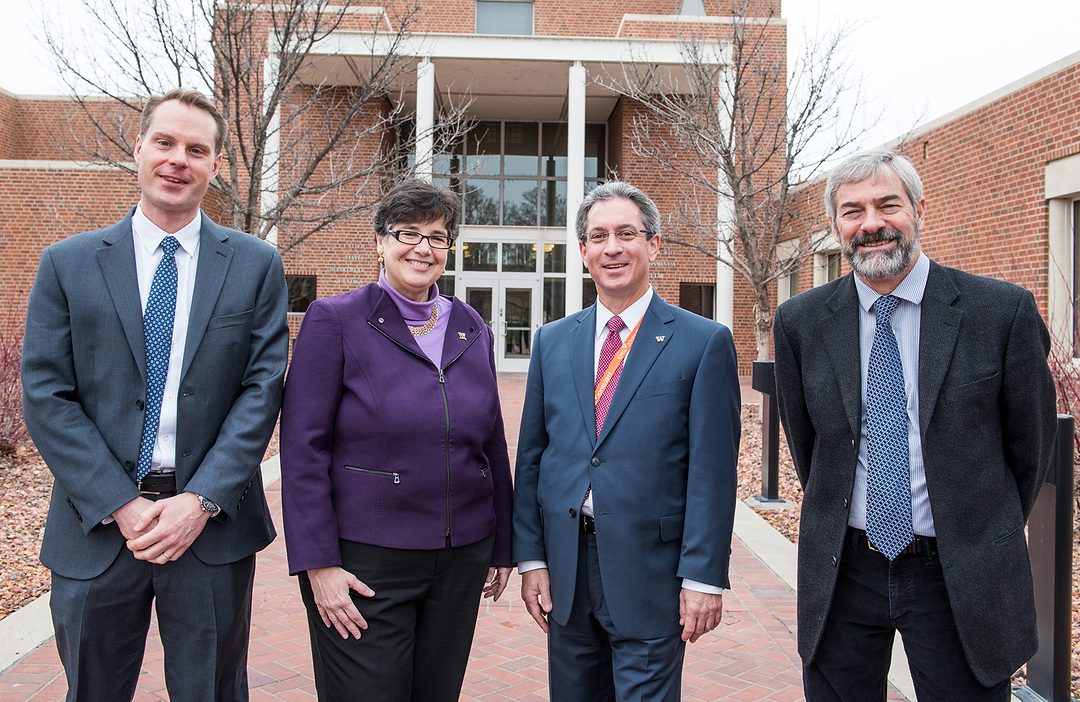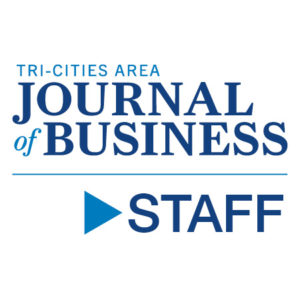
Home » PNNL-UW partnership could lead to new scientific discoveries
PNNL-UW partnership could lead to new scientific discoveries

February 14, 2018
Organizations form NW IMPACT to advance research in materials science
A closer collaboration between the top scientific brains at Pacific Northwest National Laboratory and the University of Washington could fuel future discoveries.
PNNL and UW’s new partnership aims to power advancements in materials that transform energy, telecommunications, medicine, information technology and other fields.
Touch screens, electric cars, fiber-optics and implantable devices are some of the innovations that grew out of research on new materials.
UW President Ana Mari Cauce and PNNL Director Steven Ashby announced the creation of the Northwest Institute for Materials Physics, Chemistry and Technology, or NW IMPACT, on Jan. 31 at PNNL’s Richland campus.

“The science of making new materials is vital to a wide range of advancements, many of which we have yet to imagine,” Ashby said in a statement. “By combining ideas, talent and resources, I have no doubt our two organizations will find new ways to improve lives and provide our next generation of materials scientists with valuable research opportunities.”
Cauce said the partnership’s “enormous potential” could lead to “major changes in our lives and the world.”
“We are excited to strengthen the ties between our two organizations, which bring complementary strengths and a shared passion for ground-breaking discovery,” she said.
Over its first few years, NW IMPACT aims to hire a permanent institute director, who will be based at both PNNL and the UW; create at least 20 new joint UW-PNNL appointments among existing researchers; streamline access to research facilities at the UW’s Seattle campus and PNNL’s Richland campus for institute projects; involve at least 20 new UW graduate students in PNNL-UW collaborations; and provide seed grants to institute-affiliated researchers to tackle new scientific frontiers in a collaborative fashion.
The institute builds on a history of successful partnerships between the two organizations, including joint faculty appointments and past collaborations, such as the Materials Synthesis and Simulations Across Scales Initiative, the PNNL-led Battery 500 consortium and a new UW-based Materials Research Science and Engineering Center.
But NW IMPACT is expected to be the beginning of a long-term partnership between PNNL and UW.
“By partnering the UW and PNNL together through NW IMPACT, the sum will truly be greater than the parts,” said David Ginger, a UW professor of chemistry and chief scientist at the UW Clean Energy Institute. “We are joining together our expertise and experiences to create the next generation of leaders who will create the materials of the future.”
Ginger will co-lead the institution in its initial phase with Jim De Yoreo, chief scientist for materials synthesis and simulation across scales at PNNL and a joint appointee at the UW.
Some of the areas in which NW IMPACT will initially focus include:
- Materials for energy conversion and storage, which can be applied to more efficient solar cells, batteries and industrial applications
- Quantum materials, such as ultrathin semiconductors or other materials that can harness the rules of quantum mechanics at subatomic-level precision for applications in quantum computing, telecommunications and beyond.
- Materials for water separation and utilization, which include processes to make water purification and ocean desalination methods faster, cheaper and more energy-efficient.
- Biomimetic materials, which are synthetic materials inspired by the structures and design principles of biological molecules and materials within our cells — including proteins and DNA. These materials could be applicable in medical settings for implantable devices or tissue engineering, and for self-assembled protein-like scaffolds in industrial settings.
“The science of making materials involves understanding where the atoms must be placed in order to obtain the properties needed for specific applications, and then understanding how to get the atoms where they need to be,” De Yoreo said.
The new institute will draw on the strengths and talents of each institution for innovative collaborations in these areas.
For example, PNNL has broad expertise in materials for improved batteries. The lab also offers best-in-class imaging, nuclear magnetic resonance and mass spectrometry capabilities at EMSL, the Environmental Molecular Sciences Laboratory, a DOE Office of Science user facility. DOE supports fundamental research at PNNL in chemistry, physics and materials sciences that are key to materials development.
UW brings complementary facilities and equipment to the partnership, such as the Washington Clean Energy Testbeds and a cryo-electron microscopy facility, as well as expertise in a variety of “big data” research and training endeavors, research and education programs, and ongoing materials research projects through the National Science Foundation-funded Molecular Engineering Materials Center.
Local News
KEYWORDS february 2018





